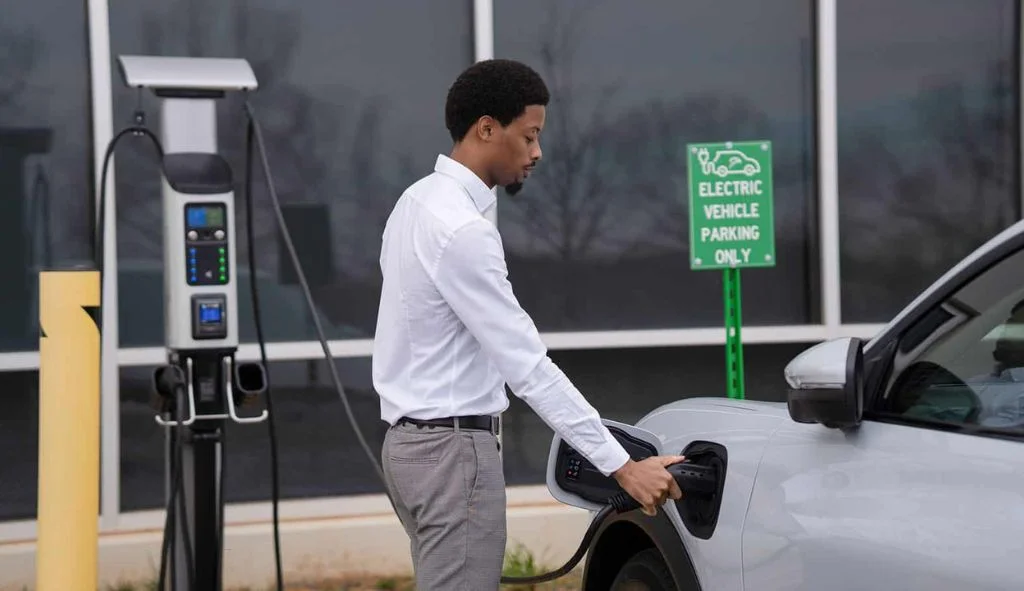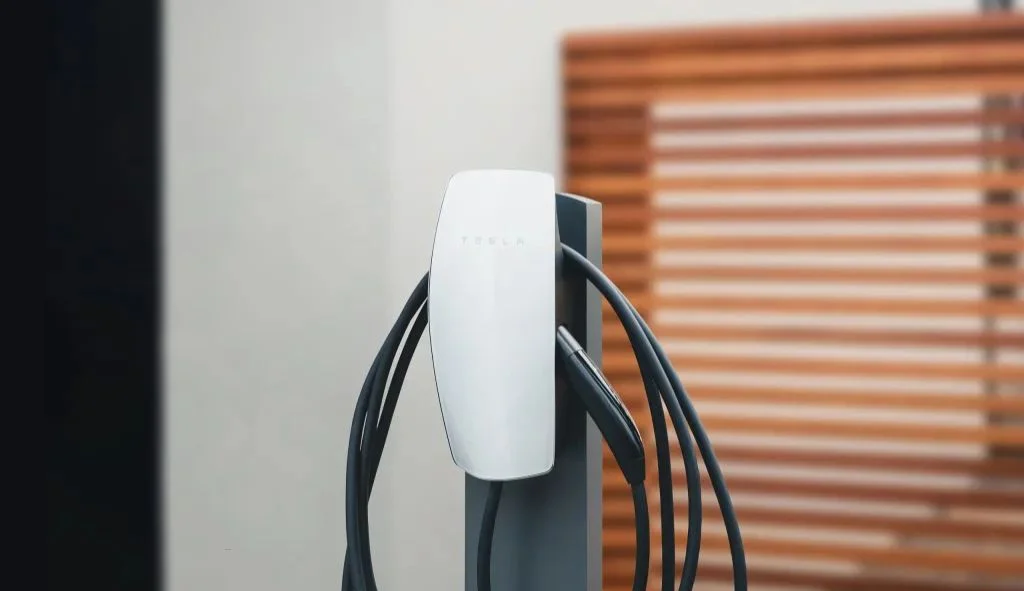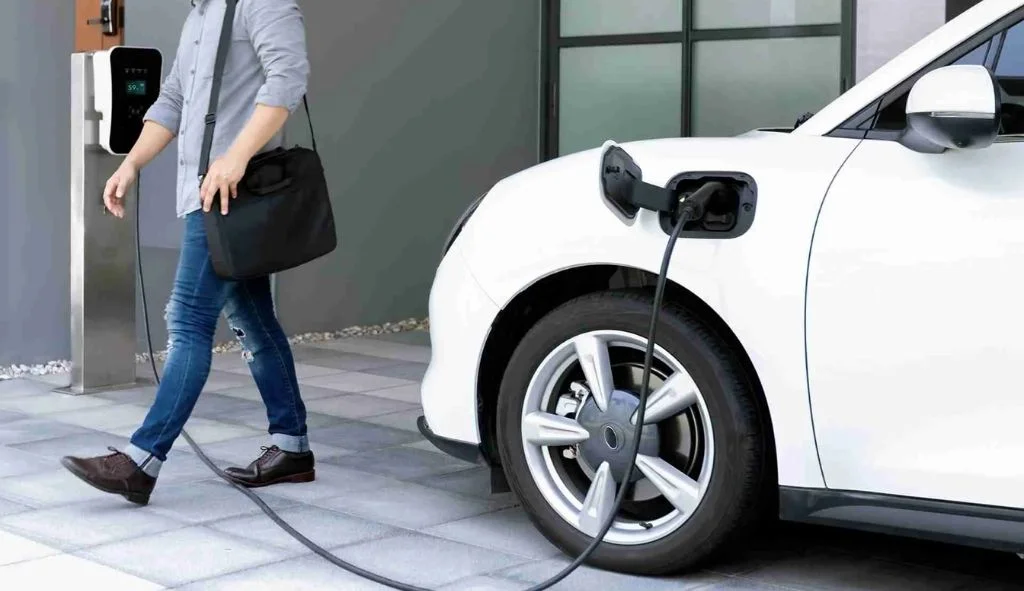Yes, Tesla vehicles can charge at non-Tesla charging stations using included or optional adapters like the J1772, CCS Combo 1, and CHAdeMO adapters, depending on station compatibility. These adapters bridge the gap between different charging standards.
Tesla Charging Adapter Types
Tesla vehicles come ready to connect to Tesla’s proprietary charging network, but with the right adapters, they can access a much wider range of charging options. Understanding which adapter you need for different charging stations is key to maximizing your Tesla’s charging flexibility.
J1772 Adapter: The Standard Inclusion
The SAE J1772 adapter comes included with every Tesla vehicle upon delivery. This essential adapter allows Tesla owners to connect their vehicles to most Level 2 public charging stations across the country.
“The J1772 Adapter is included with every Tesla vehicle delivery. Compatible with most Level 2 public charging stations, the J1772 Adapter supports charging speeds up to 19.2kW,” according to Tesla’s product information. This adapter functions as the gateway to thousands of non-Tesla public charging stations that use the J1772 standard.
The adapter is simple to use – you simply attach it to the charging station’s J1772 connector, then plug the combined unit into your Tesla’s charging port. If you need a replacement J1772 adapter, it costs $50 from Tesla’s shop.
CCS Combo 1 Adapter: Specifications and Usage
The CCS Combo 1 Adapter is a more specialized tool that allows Tesla vehicles to access DC fast charging stations that use the Combined Charging System (CCS) standard. Unlike the J1772 adapter, this is not included with Tesla vehicles and must be purchased separately.
The CCS adapter is designed for high-voltage DC charging, with specifications including:
- Voltage rating: 500V DC
- Environmental protection: IP44 rated enclosure
- Operating temperature range: -22°F to +122°F (-30°C to +50°C)
- Storage temperature range: -40°F to +185°F (-40°C to +85°C)
Not all Tesla vehicles are compatible with CCS charging capability. To determine if your Tesla supports this adapter, you can check by touching Controls > Software > Additional Vehicle Information on the touchscreen. This information is important to confirm before investing in this adapter.
The proper usage procedure for the CCS Combo 1 adapter involves:
- Opening the charge port door on your Tesla
- Aligning the adapter to the charging station’s cable and pushing firmly to attach
- Plugging the adapter into your Tesla and waiting for the vehicle to engage the latch
- Following the charging station’s instructions to start the charging session
CHAdeMO Adapter: Features and Compatibility
The CHAdeMO adapter represents another option for Tesla owners looking to expand their charging possibilities. This adapter allows access to CHAdeMO fast charging stations, which follow a standard developed in Japan but also available in many locations worldwide.
According to user experiences, the CHAdeMO adapter costs significantly more than the J1772 adapter, with one user reporting a price of $510. This makes it a more substantial investment for Tesla owners.
When using the CHAdeMO adapter at stations like those operated by EVGO, the most reliable approach is to “plug the Tesla->CHAdeMO adapter into the vehicle first, THEN plugging in the DC Fast Charging station into the adapter”. This sequence helps ensure proper connection and initiation of the charging session.
Charging Your Tesla at Different Station Types
With the right adapters in hand, Tesla owners can access a variety of charging infrastructure. Here’s how charging works across different station types.
Level 2 Public Charging Stations
Level 2 public charging stations represent the most common type of public EV charging infrastructure in the United States. With the included J1772 adapter, Tesla owners can access these stations without additional purchases.
These stations typically provide power at 240 volts (similar to what powers large home appliances) and can deliver between 3.3 kW to 19.2 kW of power to your Tesla. The J1772 adapter that comes with every Tesla supports these full charging speeds.
Networks like ChargePoint operate many Level 2 stations. As they explain, “For AC stations with J1772 connectors, Tesla drivers can use the J1772 adapter provided with every Tesla vehicle”. This makes these stations immediately accessible to all Tesla owners without additional investment.
Level 2 charging adds approximately 12-37 miles of range per hour of charging, depending on your specific Tesla model and the station’s power output. While slower than Supercharging, these stations are useful for workplace charging, shopping centers, or overnight charging while traveling.
DC Fast Charging Stations
DC fast charging stations provide much higher charging speeds than Level 2 stations by delivering high-voltage direct current directly to the vehicle’s battery, bypassing the car’s onboard charger.
For Tesla owners to access non-Tesla DC fast charging stations, either the CCS Combo 1 adapter or the CHAdeMO adapter is required, depending on the station’s connector type.
ChargePoint, a major charging network operator, notes: “Many Tesla drivers can use the CCS1 adapter from Tesla to use a CCS1 connector on ChargePoint DC fast charging stations”. Before using these stations, it’s important to verify your Tesla’s compatibility by checking the CCS adapter support status in your vehicle settings.
DC fast charging can add significant range in a short period-often 150-200 miles in about 30 minutes, depending on the station’s power output and your vehicle’s acceptance rate. This makes these stations particularly valuable for long-distance travel when Superchargers aren’t available on your route.
Non-Tesla Network Compatibility
Beyond the physical adapter connections, Tesla owners should understand how to interact with different charging networks’ payment and access systems.
Many non-Tesla networks like ChargePoint, EVGO, and Electrify America require users to have network-specific accounts or apps. Some Tesla owners report signing up for services like EVGO, which can work across multiple networks like ChargePoint as well.
When using these networks, the charging process typically involves:
- Creating an account with the charging network
- Adding a payment method to your account
- Using the network’s app to locate stations and initiate charging
- Connecting your Tesla using the appropriate adapter
- Following prompts on the station or app to start and stop charging
The convenience varies between networks, with some offering simpler “plug and charge” capabilities and others requiring more steps to initiate a charging session.

Charging Speed and Efficiency Considerations
When charging a Tesla at non-Tesla stations, several factors affect the charging experience, including speed, efficiency, and practical considerations.
Charging Time Variations
Charging times at non-Tesla stations can vary significantly based on multiple factors. According to the CCS adapter documentation, “Charging times vary based on the power and current available from the charging station, subject to various conditions”.
Level 2 charging stations typically deliver between 3.3 kW and 19.2 kW of power, resulting in charging times of 4-12 hours for a full charge depending on your Tesla’s battery capacity. DC fast charging using CCS or CHAdeMO adapters can provide much faster charging, often 50-150 kW, though this is generally slower than Tesla’s Supercharger network which can deliver up to 250 kW on V3 Superchargers.
Some users report that non-Tesla DC fast charging stations may deliver less power to Tesla vehicles than to native vehicles designed for those networks. This can result in longer charging sessions compared to using Tesla’s own Supercharger network.
Power Output Differences
The actual power your Tesla receives at a non-Tesla station depends on several technical factors:
- The station’s maximum output capability
- The adapter’s maximum throughput rating
- Your Tesla model’s onboard charging capabilities
- Current battery state of charge (charging typically slows as the battery fills)
For example, while a station might advertise 350 kW capability, the CCS adapter might limit the power to your Tesla to a lower level. The CHAdeMO adapter, for instance, has historically been limited to around 50 kW in most implementations.
The relationship between charging power and time is not linear. Batteries charge faster at lower states of charge and slow down as they approach full capacity-a phenomenon known as the “charging curve.” This means the last 20% of battery capacity typically takes disproportionately longer to fill than the first 80%.
Temperature and Battery Factors
Temperature plays a significant role in charging efficiency at any station. The CCS adapter documentation notes that “charge time also depends on ambient temperature and the vehicle’s Battery temperature”.
Cold batteries charge more slowly than warm ones. Tesla vehicles have battery thermal management systems that may need to warm the battery before accepting full charging power. When charging at non-Tesla stations, this pre-conditioning might need to be manually initiated before arrival, unlike at Superchargers where the navigation system can automatically prepare the battery.
The CCS adapter’s own operating temperature range (-22°F to +122°F or -30°C to +50°C) also affects functionality in extreme weather conditions. Outside these temperature ranges, the adapter may not function properly or may limit charging power to protect itself and the vehicle.
Economic and Practical Benefits
Using non-Tesla charging stations provides both economic benefits and practical advantages for Tesla owners.
Cost Comparisons
The cost of charging at non-Tesla stations varies widely by network, location, and membership status. Some networks charge per kWh of energy delivered, while others charge by time connected.
Tesla notes that “Tesla does not regulate pricing or charging experiences at third-party charging stations. Public Level 2 charging stations may require payment”. This means prices can vary significantly, from free charging at some retail locations to premium pricing at certain fast-charging stations.
Some charging networks offer subscription plans that reduce per-session costs for frequent users. For example, Tesla has mentioned that non-Tesla vehicles using their Superchargers “may inflate charging fees for other brands, though you can get the same rates as Tesla drivers if you sign up for a $12.99/month Supercharger membership”. Similar membership models exist for other charging networks.
When comparing costs, it’s important to factor in not just the price per kWh but also:
- Membership or subscription fees
- Idle fees that may apply after charging is complete
- Transaction or session fees
- The cost of purchasing specialized adapters
Availability and Station Locations
One of the primary benefits of being able to use non-Tesla charging stations is the greatly expanded charging network available to you. While Tesla’s Supercharger network is extensive with around 21,500 V3 Superchargers, adding compatibility with other networks significantly increases charging options.
ChargePoint alone claims to operate about 34,000 chargers in the US, more than double Tesla’s network. Combined with other networks like EVGO, Electrify America, and local utility-operated stations, the total number of available charging points increases dramatically when using adapters.
This expanded accessibility is particularly valuable in areas where Tesla Supercharger coverage is sparse, such as rural regions or certain urban centers where Tesla hasn’t yet built out their network fully.
Trip Planning with Mixed Charging Networks
For Tesla owners planning long trips, the ability to use multiple charging networks provides redundancy and flexibility. If a Supercharger location is full or offline, having access to alternative fast charging options can prevent significant delays.
Many Tesla owners use a combination of planning tools:
- Tesla’s built-in trip planner (which only shows Tesla Superchargers)
- Third-party apps like PlugShare, ChargePoint, or ABRP (A Better Route Planner) that show all available charging options
- Network-specific apps for payment and real-time availability information
When planning trips with mixed charging networks, it’s important to consider:
- The location of stations relative to your route
- The types of connectors available at each location
- Operating hours and accessibility (some stations in gated areas may not be available 24/7)
- Backup options in case primary charging locations are unavailable
Tesla Wall Charger Spec Sheet PDF
Frequently Asked Questions
What adapter comes standard with a Tesla?
Every Tesla vehicle comes with the SAE J1772 charging adapter included at delivery. This adapter allows you to connect to most Level 2 public charging stations that use the J1772 connector standard.
How much does the CCS adapter for Tesla cost?
The CCS Combo 1 adapter for Tesla typically costs between $180 for off-market options to around $230 for brand-approved hardware.
Can all Tesla models use the CCS adapter?
No, not all Tesla models support CCS charging capability. To determine if your vehicle is compatible, check your vehicle settings by touching Controls > Software > Additional Vehicle Information on the touchscreen.
How fast can my Tesla charge at a non-Tesla DC fast charger?
Charging speeds vary based on multiple factors including the station’s power output, adapter limitations, vehicle model, and battery conditions. Using a CCS adapter, many Tesla models can charge at rates between 50-150 kW at compatible DC fast charging stations, though this is typically slower than Tesla Supercharger speeds.
Are there any risks to using non-Tesla charging stations?
When using proper Tesla-approved adapters, there are no significant risks to your vehicle. However, you should always inspect adapters for damage before use and follow proper connection procedures. Some third-party adapters may not meet Tesla’s safety and performance standards, so using official Tesla adapters is recommended.
Can I use ChargePoint stations with my Tesla?
Yes, Tesla vehicles can use ChargePoint stations. For Level 2 AC stations, use the included J1772 adapter. For DC fast charging stations, you’ll need the CCS1 adapter if your Tesla supports it.
How do I know if a non-Tesla charging station is compatible with my car?
You can check compatibility through apps like PlugShare or ChargePoint, which list connector types available at each station. For Tesla vehicles in North America, look for stations with J1772 connectors (for Level 2 charging) or CCS or CHAdeMO connectors (for DC fast charging).
What should I do if the charging station or adapter isn’t working?
If you encounter issues, try these steps:
- Check that the adapter is properly connected to both the station and your vehicle
- Verify that your Tesla recognizes the connection (check the touchscreen)
- Restart the charging process following station instructions
- Contact the charging network’s customer support if problems persist
- As a last resort, find an alternative charging location
Is it more expensive to charge at non-Tesla stations?
Pricing varies widely across charging networks. Some Level 2 stations at retail locations may be free, while DC fast charging is typically priced by kWh or by time. Many networks offer membership plans that reduce per-session costs. Generally, charging at home remains the most economical option, followed by Tesla Superchargers (for Tesla owners), with non-Tesla DC fast charging networks often being the most expensive option.


